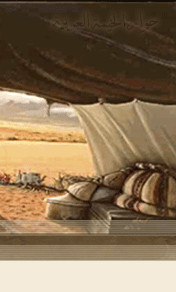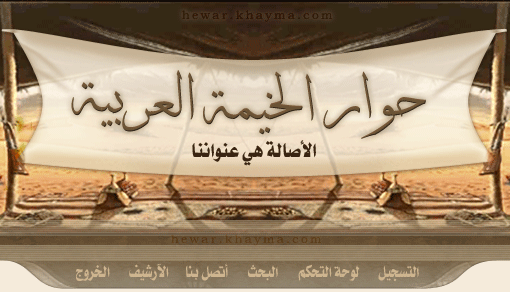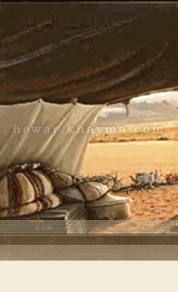إلى:
المنظمات الإنسانية في العالم
هذه مناشدة ملحة لمساعدة شخص مريض اسمه محمد عزيز في ناشفل، تينسي الذي له حالة فريدة ومشكلة تنفس خطيرة.
محمد عزيز كردي من شمال العراق (ومواطن أمريكي حالياً) هو ضحية الهجوم الكيماوي على مدينة حلبجة في شمال العراق عام 1988 متزوج وله طفلان عمر أحدهما سنتان والثاني أربع سنوات. له عجز 100% نتيجة مرض رئوي مزمن كما أن زوجته لا تستطيع أن تشتغل لأنها تقوم بتوفير العناية له ولطفليها.
لقد توفى العديد من أفراد عائلة السيد عزيز القريبين منه منذ عام 1988 بسبب نفس الهجوم الكيماوي. كما أن السيد عزيز هو الوحيد من عائلته الذي استطاع أن يأتي إلى الولايات المتحدة.
أنه بحاجة ملحة إلى معالجة طبية بسبب إصابة جهازه التنفسي. ونظراً لاستنشاقه غازات كيماوية خلال قصف حلبجة في 16 آذار 1988 فهو مرشح لاستزراع رئوي ولكن قائمة الانتظار طويلة وقد تفوته الأوان عندما يكون احدهم حاضراً بسبب التدهور السريع لرئتيه. ولحسن الحظ هنالك معالجة جديدة يمكنها أن تحسن وظيفة رئتيه ولكن المريض لا يستطيع أن يتحمل كلفة المعالجة تدعى المعالجة ( دواء مضاد للڨيروس گاما- 1ب) لا يغطي التأمين الصحي للسيد عزيز TennCare Medicaid (شيء عسير) هذه المعالجة. هذه معالجة جديدة وسعرها باهظ على السيد عزيز. إن المعالجة موجودة في الولايات المتحدة حالياً. نطلب مساعدتكم في تغطية كلفة هذه المعالجة. لقد أبدى كل من جامعة فندربلت ومركز فندربلت الطبي في ناشڨل استعدادهما للتعاون مع ضامن معالجة السيد عزيز فيما يتعلق بالترتيبات المادية.
نأمل مساعدكم لإنقاذ حياة السيد عزيز ونقدره حق التقدير.
وشكرا ً على مساهمتكم الطيبة
محمد عزيز
Mohamed Aziz
3404 Donna Kay Dr
Nashville, TN 37211
USA
1- 615- 8320922
atrifay@hotmail.com
في مدينة حلبجة قتل بالغازات الکيمياوية ما يقارب خمسة آلاف شخص ، منها عوائل کاملة، کما و جرح أکثر من عشرة آلاف شخص و شرد الآلاف الآخرين. و مع أن هناك الکثيرين من تعرضوا لهذه الغازات السامة ما زالوا على قيد الحياة إلا أنهم يعانون من أعراض تلك الغازات و هم في وضع صحي و نفسي سيئ للغاية، هم يتمنون الموت على حياة ملئها العذاب و المعاناة. إن الغازات السامة قد أثرت حتى على العوامل الوراثية لنساء المنطقة فهم يولدون أطفالا معوقين.
محمد عزيز، هو واحد من مرضى القصف الکيمياوي الذي تعرض له مدينة حلبجة، عدا هذا فإنه فقد 15 شخصا من أقرباءه، حالة محمد عزيز کان موضوعا لبحث نشر في مجلة طبية أمريکية بإسم: Journal of American Medical Association
يقول الباحث بأن محمد عزيز هو وثيقة حية لإثبات إستعمال أسلحة القتل الجماعي من قبل السلطات العراقية ضد المواطنين الکورد، و أعراض تلك الغازات واضحة، فقد تعرض قصباته الهوائية لأضرار بالغة و غير قابلة للعلاج، لذا فهو سيعاني بسبب ذلك طول حياته.
يقول الدکتور آرون ميلستون من Vanerbilt University Center و الباحثين الآخرين:
تعرض محمد عزيز إلى العمى نتيجة للغازات الکيمياوية، وهو يعاني من سعال شديد و ضيق في التنفس، لذا فهو يحتاج إلى رئتين جديدتين، لأنه رئتيه يعملان فقط بنسبة 25%. عندما کان محمد عزيز في سن 39 سنة تعرض للعمى لمدة شهر و لا يزال يعاني من السعال و ضيق التنفس، يقول الباحث بأن أکثر سکان تلك المنطقة سوف يعانون من نتائج القضف الکمياوي لمدة طويلة.
غاز الخردل الذي أستخدم في حلبجة هو نفس المکون الکمياوي الذي أستخدم في الحرب العالمية الثانية و تسبب في موت 5% من الذين إستنشقوه. حسب المرکز الأمريکي للسيطرة و الوقايةCDC فإن الأشخاص الذين تعرضوا لتلك الغازات قد يعانون من الأعراض التالية لمدة غير محددة:
ـ إحمرار الجلد و الحکة
ـ ألم و حرقة في العيون مع سيلان الدموع و الإصابة بالعمى بين فترة و أخرى.
ـ ضيق التنفس و نزيف الأنف مع العطس و سيلان الدموع.
إضافة لما أعلاه من الممکن أن يصاب الشخص إلى الأمراض التالية:
Chonic bronchitis, Airway hyperactivity, bronchitis
http://jama.ama-assn.org/cgi/content...urcetype=HWCIT
http://www.mc.vanderbilt.edu/reporte...x.html?ID=2800
Bronchiolitis Obliterans in a Survivor of a Chemical Weapons Attack
To the Editor: Bronchiolitis obliterans develops when an injury of small conducting airways leads to the proliferation of granulation tissue and obliteration of the airway lumen. The histological pattern is nonspecific and can result from multiple etiologies. The clinical presentation is divided into 5 categories: toxic fume inhalation, postinfectious, connective tissue disease–associated, localized, and idiopathic. 1 Several substances have been reported to cause bronchiolitis obliterans through inhalation of toxic fumes. The distribution of these agents in the lung is determined by the size of the molecule, the duration of exposure, and the solubility of the agent. 2
The inhalation of mustard gas has been reported to cause chronic bronchitis, airway hyperactivity, bronchiectasis, and pulmonary fibrosis, 3- 6 but there are no reports of the occurrence of bronchiolitis obliterans. We report a patient with confirmed bronchiolitis obliterans several years after likely exposure to mustard gas in Iraq.
Report of a Case
In August 2001, we evaluated a 37-year-old male Iraqi Kurd for possible lung transplantation. He reported that he had been present on March 16, 1988, when Iraqi fighter jets dropped multiple warheads on the northeastern Iraqi city of Halabja. (The Halabja attack has been extensively documented elsewhere. 7- 8) He and his family initially feared direct physical harm and fled to the basement of their home, but oppressive heat and poor air circulation forced them from this enclosed space. As they ran outside, the patient noted a noxious odor similar to rotten fruit. He reported that the intense smell lasted for 5 hours, during which time 15 members of the patient's family died on the street.
Six hours after his initial exposure, our patient reported experiencing eye pain, copious tearing, cough, and dyspnea. He then developed complete blindness, a condition that lasted for 20 days. The Red Crescent service of Iran transported him to the United States for ophthalmologic care and he recovered with treatment (records unavailable). His cough, dyspnea, and production of sputum progressed over the next 14 years, eventually limiting his ability to perform activities of daily living. The patient reported that his parents also complain of similar but less severe lung-related symptoms, including the daily production of purulent sputum. Neither the patient nor any members of his family have any history of tobacco use. He denied having had a history of pneumonia or significant occupational or environmental exposures before 1988.
The patient's ambulatory room air oxygen saturation was 87%. Pertinent physical findings included decreased bilateral breath sounds and an increased anteroposterior diameter. A posterior-anterior chest radiograph displayed hyperinflation and basilar bullae ( Figure 1), and pulmonary function testing revealed a severe obstructive pattern with no airflow reversibility. There was no evidence of a connective tissue disorder or 1-antitrypsin deficiency on laboratory evaluation. Subsequent studies included a high-resolution computed tomography scan of his chest ( Figure 2) and transbronchial lung biopsies ( Figure 3), which revealed bronchiolitis obliterans.
THIS IS NEW REPORT
Aaron Milstone, M.D. Phone 615-322-2386
Division of Allergy, Pulmonary and Critical Care Medicine T-1217 MCN
Vanderbilt University Medical Center FAX 615-343-1809
Nashville, Tennessee 37232-2650
September 2, 2008
To Whom It May Concern:
This letter is regarding my patient, Mr. Mohammed Aziz. Mr. Aziz has severe pulmonary dysfunction related to bronchiolitis obliterans that he sustained while exposed to mustard gas in Iraq. The patient has been under my care for the last 5 years and despite corticosteroid treatment and inhalers, he has had a progressive decline in his pulmonary reserve. He also has frequent hospitalizations for exacerbations of his lung disease. Based on data performed throughout Europe and also in the Middle East, there are studies that suggest that the drug, Interferon, may have benefit in slowing the decline related to bronchiolitis obliterans. The drug that is typically used in the studies has been Interferon. The dose in most of these studies is a dose of 200 mcg three times weekly. The current cost here in the United States for this drug is approximately $3284.48 cents per dose. The patient would need a dose based on the four-week cycle with a total accumulative cost of approximately $42698.24.
I recognized that the cost of this drug is high; however, Mr. Aziz has spent the last 5 years trying to get awareness for the Kurdish population in Iraq and for Kurdistan through numerous media outlets and has served this purpose quite well. I think that it would be in the patient's best interest to obtain this drug if the government is willing to pay for the cost of this particular pharmaceutical. If you have questions regarding this plan, please do not hesitate to contact me.
Yours truly,
Aaron P. Milstone, M.D. Co-Medical Director Vanderbilt Lung Transplant Program
Aaron Milstone" <aaron.milstone@vanderbilt.edu
APM/dts588
dd: 09/02/2008
dt: 09/02/2008
Vanderbilt University Medical Center Release of Information
(615) 322-2062











